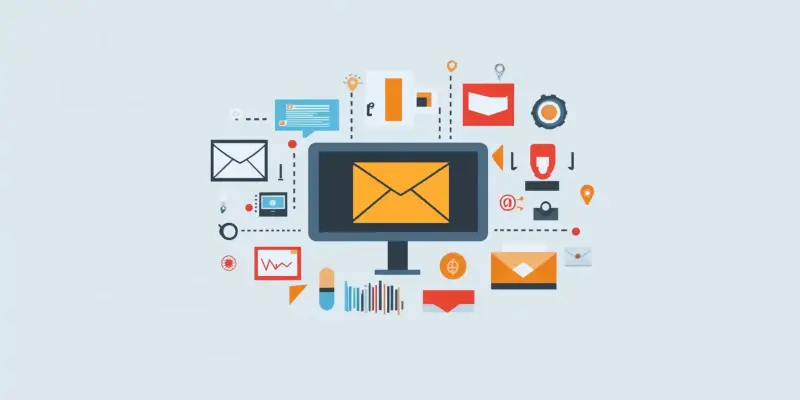On April 1, 2025, Google marked Gmail’s 21st anniversary with a groundbreaking enhancement in email security by launching end-to-end encryption (E2EE) for enterprise users. This innovative feature provides an extra layer of security by allowing business clients to send fully encrypted emails effortlessly. By leveraging Google’s client-side encryption (CSE) technology, data is encrypted on the client side before it reaches Google servers, sidestepping traditional complexities associated with Secure/Multipurpose Internet Mail Extensions (S/MIME) protocols.
Enhanced Security for Gmail Enterprise Users
Seamless Encryption and Decryption
Google’s introduction of E2EE presents a significant departure from traditional email security measures by creating a “protective bubble” around emails. When Gmail enterprise users send an E2EE email to another Gmail user, the email is automatically encrypted and decrypted seamlessly upon receipt. This level of security ensures that sensitive information remains confidential throughout its journey from sender to recipient. For non-Gmail recipients using services like Outlook or Yahoo Mail, a unique link is provided to access the encrypted email within a restricted version of Gmail, utilizing a guest Google Workspace account to view and interact with the message securely. This approach to email encryption not only enhances security but also simplifies the process for the end user by integrating CSE technologies managed by the customer, while ensuring encryption keys remain inaccessible to Google servers.
Phased Introduction of E2EE
Google plans to roll out this security feature in multiple phases. Initially, starting immediately, the beta phase allows for end-to-end encrypted emails within the same organization. This phased approach will expand over the coming weeks, eventually enabling end-to-end encrypted emails to be sent and received across different organizations. By the end of 2025, the E2EE capability aims to provide comprehensive coverage, allowing enterprise users to send encrypted emails to any email provider’s inbox. Accompanying these enhancements, Google is also introducing an array of security features including CSE default mode for IT administrators, classification labels, data loss prevention (DLP), and an AI-powered threat protection model designed to improve spam and phishing attack detection.
Implementation and Impact of E2EE
User-Friendly Encryption Features
The E2EE feature is now available to customers subscribed to Google Workspace Enterprise Plus, Education Plus, and Education Standard. These users can implement the encryption by selecting the “Message security” icon and enabling “Additional encryption” at the time of email composition. The significance of this development is particularly profound for organizations operating within regulated industries, allowing them to navigate compliance challenges related to data sovereignty, HIPAA, and export controls more effectively. Google’s introduction of E2EE for Gmail underscores a pivotal shift towards making robust email encryption accessible to enterprise users without necessitating extensive technical knowledge or the cumbersome handling of certificate management systems.
Moving Towards Advanced Email Security Standards
By making such a powerful encryption model available to business users, Google aims to set a new benchmark in email security standards. The integration of E2EE into Gmail serves to protect sensitive data while maintaining the efficiency and usability that enterprises expect from Google Workspace. This leap in secure communication not only protects client data but also bolsters confidence in the use of digital communication for sensitive information. As organizations globally seek more stringent data protection measures, Google’s commitment to providing advanced security features underlines the importance of privacy and data security in today’s digital landscape.
The Future of Email Security
Advanced Compliance and Privacy Control
The launch of E2EE by Google represents an essential step forward in empowering businesses to secure their communications against evolving digital threats. By providing stronger encryption methods, Google’s efforts align with the rising need for advanced security protocols to protect sensitive data in transit. As organizations increasingly face compliance and regulatory requirements, such encryption models present a viable solution to maintaining privacy and control over business communications. The upcoming stages of E2EE’s implementation will likely see more refined enhancements and broader adoption, paving the way for a new era of email security.
Adoption and Expansion
On April 1, 2025, Google celebrated the 21st anniversary of Gmail by introducing a significant upgrade in email security: end-to-end encryption (E2EE) for enterprise users. This cutting-edge feature offers businesses an extra layer of protection, allowing their clients to send and receive fully encrypted emails with ease. By utilizing Google’s client-side encryption (CSE) technology, emails are encrypted on the user’s side before they are transmitted to Google’s servers. This effectively bypasses the traditional complexities associated with Secure/Multipurpose Internet Mail Extensions (S/MIME) protocols, which often required more intricate setup and management. This enhancement marks a huge step forward in email security for the enterprise sector, ensuring that sensitive information remains confidential and secure from potential breaches or unauthorized access. With this move, Google is reaffirming its commitment to providing state-of-the-art security solutions for its business customers, making email communication safer and more secure than ever before.

